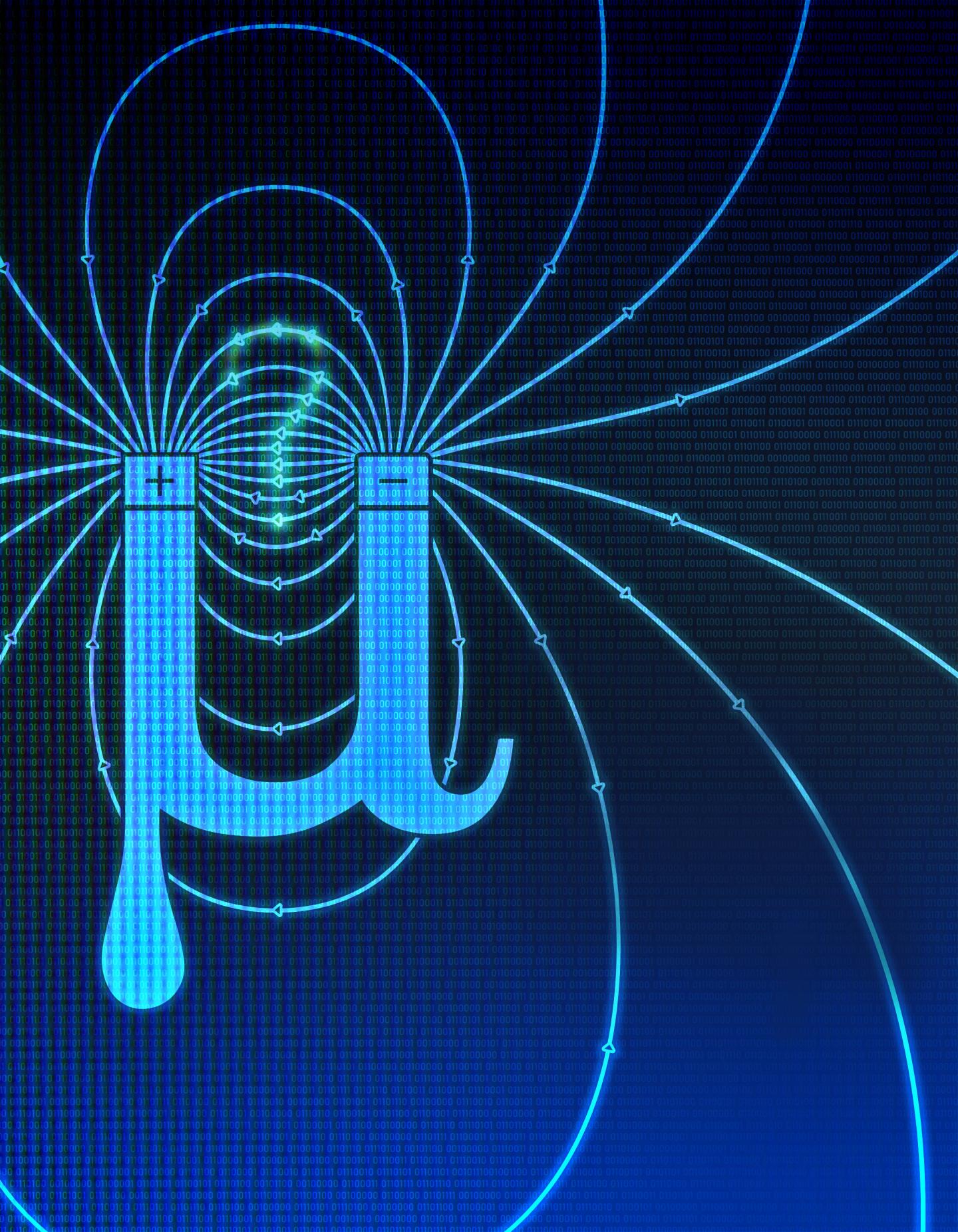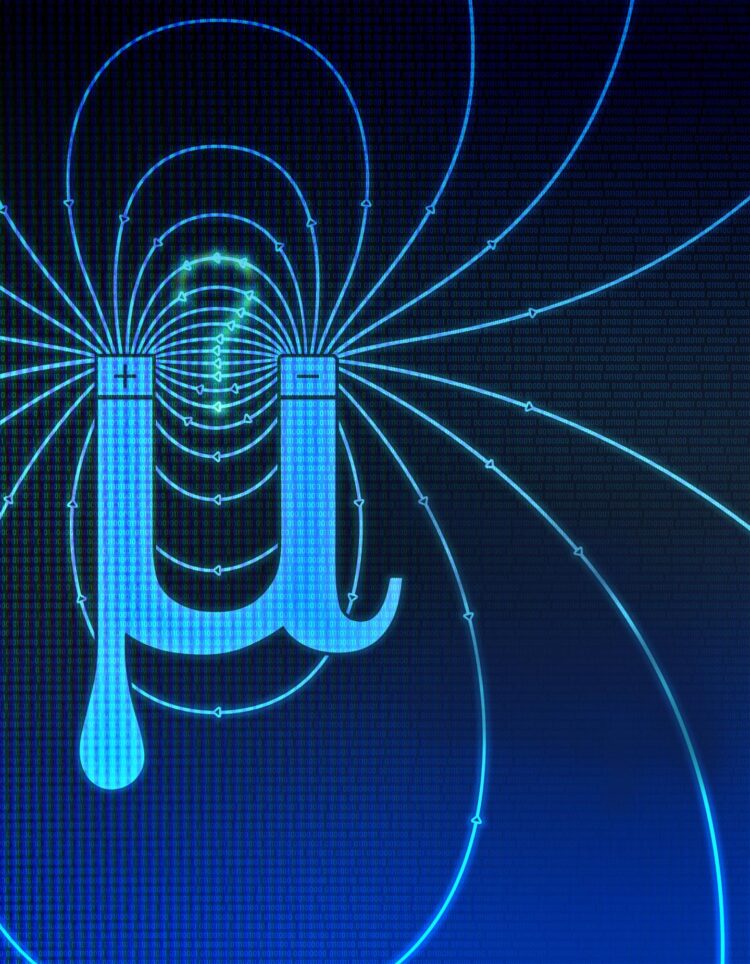A new estimate of the strength of the sub-atomic particle’s magnetic field aligns with the standard model of particle physics

Credit: Dani Zemba, Penn State
A new estimation of the strength of the magnetic field around the muon–a sub-atomic particle similar to, but heavier than, an electron–closes the gap between theory and experimental measurements, bringing it in line with the standard model that has guided particle physics for decades.
A paper describing the research by an international team of scientists appears April 8, 2021 in the journal Nature.
Twenty years ago, in an experiment at Brookhaven National Laboratory, physicists detected what seemed to be a discrepancy between measurements of the muon’s “magnetic moment”–the strength of its magnetic field–and theoretical calculations of what that measurement should be, raising the tantalizing possibility of physical particles or forces as yet undiscovered. The new finding shrinks this discrepancy, suggesting that the muon’s magnetism is likely not mysterious at all. To achieve this result, instead of relying on experimental data, researchers simulated every aspect of their calculations from the ground up–a task requiring massive supercomputing power.
“Most of the phenomena in nature can be explained by what we call the ‘standard model’ of particle physics,” said Zoltan Fodor, professor of physics at Penn State and a leader of the research team. “We can predict the properties of particles extremely precisely based on this theory alone, so when theory and experiment don’t match up, we can get excited that we might have found something new, something beyond the standard model.”
For a discovery of new physics beyond the standard model, there is consensus among physicists that the disagreement between theory and measurement must reach five sigma–a statistical measure that equates to a probability of about 1 in 3.5 million.
In the case of the muon, measurements of its magnetic field deviated from the existing theoretical predictions by about 3.7 sigma. Intriguing, but not enough to declare a discovery of a new break in the rules of physics. So, researchers set out to improve both the measurements and the theory in the hopes of either reconciling theory and measurement or increasing the sigma to a level that would allow the declaration of a discovery of new physics.
“The existing theory for estimating the strength of the muon’s magnetic field relied on experimental electron-positron annihilation measurements,” said Fodor. “In order to have another approach, we used a fully verified theory that was completely independent of reliance on experimental measurements. We started with rather basic equations and built the entire estimation from the ground up.”
The new calculations required hundreds of millions of CPU hours at multiple supercomputer centers in Europe and bring theory back in line with measurement. However, the story is not over yet. New, more precise experimental measurements of the muon’s magnetic moment are expected soon.
“If our calculations are correct and the new measurements do not change the story, it appears that we don’t need any new physics to explain the muon’s magnetic moment–it follows the rules of the standard model,” said Fodor. “Although, the prospect of new physics is always enticing, it’s also exciting to see theory and experiment align. It demonstrates the depth of our understanding and opens up new opportunities for exploration.”
The excitement is far from over.
“Our result should be cross-checked by other groups and we anticipate them,” said Fodor. “Furthermore, our finding means that there is a tension between the previous theoretical results and our new ones. This discrepancy should be understood. In addition, the new experimental results might be close to old ones or closer to the previous theoretical calculations. We have many years of excitement ahead of us.”
###
In addition to Fodor, the research team includes Szabolcs Borsanyi, Jana N. Guenther, Christian Hoelbling, Sandor D. Katz, Laurent Lellouch, Thomas Lippert, Laurent Lellouch, Kohtaroh Miura, Letizia Parato, Kalman K. Szabo, Finn Stokes, Balint C. Toth, Csaba Torok, Lukas Varnhorst.
Participating institutions include Penn State, the University of Wuppertal in Germany; the Jülich Supercomputing Centre in Germany; Eötvös University in Budapest, Hungary; the University of California, San Diego; the University of Regensburg in Germany; Aix Marseille Univ, Université de Toulon in Marseille, France; Helmholtz Institute Mainz in Germany; the Kobayashi-Maskawa Institute for the Origin of Particles and the Universe, Nagoya University in Japan.
The research was funded by the German Research Foundation (DFG); the German Federal Ministry of Education and Research (BMBF); the Hungarian National Research, Development and Innovation Office; and the Excellence Initiative of Aix-Marseille, a French Investissements d’Avenirf program, through the Chaire d’Excellence initiative and the Laboratoire d’Excellence.
Media Contact
Sam Sholtis
[email protected]
Related Journal Article
http://dx.





